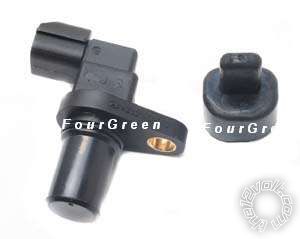You already know as much as about mechanics - but maybe I'll qualify that later...
As to MMs - hereby referred to as DMMs since most these days are digital (Multi-Meters) that contain combinations of volt meters, resistance meters, current aka ammeters, frequency, capacitance, inductance, temperature... and testers for diode, transistors, continuity...
The first rule is never use the resistance range on a powered circuit.
Another first rule is never an ammeter (current range) across a voltage source - it needs to be inserted inline aka "in series".
And of course the first rule - make sure the meter and its probes are appropriately SAFETY rated.
The second rule - well, I can't think of any as such. The
first rules (LOL) above are to prevent meter damage, and damage to circuits or YOU.
After that comes the understanding of how to use them - eg, maybe start off on a high range for non auto-ranging meters, and stay away from hazardous voltages unless you know what you are doing and have properly rated equipment (Cat II & III etc).
You should be able to find web sources that will teach or show you how to use a DMM. (Hey man, I just poured coffee beans into my espresso machine instead of the grinder, so I'll leave those tricky search & google things to you.)
But I'll short-circuit some of those lessons with a few tips... (... oh my puns...)
Never short-circuit circuits with the tips if a probe, nor the ammeter range.
That includes testing ACROSS batteries for current. Even a small button of flattish AAA will probably blow a DMM's internal fuse (typically 250mA).
If ever using a 10A or similar Amp range that requires reconnecting the DMM probes, return the probe(s) to their usual volts terminals when finished. That prevents the next test being a short across whatever - maybe a 12V battery - even though the "meter" is set to Volts.
Let's just say the above is a rule that I RE-discovered last week... again! (I set the dial to 20V to measure my HU's supply voltage not realising the + probe was still on the 10A terminal!)
Maybe I should explain (as I once did to a 3rd year electr* engineering student)...
An ammeter is LOW impedance (resistance). It's like a short circuit (aka crowbar or metal ladder).
Hence like a wire it can be connected IN LINE with a battery or voltage source etc, but
NOT ACROSS the battery terminals or voltage source.
Voltmeters are the opposite - high resistance (impedance).
Hence you can connect
across battery and voltage terminals and NOT cause high current flows as short-circuits do.
(And in series, it will stop current flow, and measure the "open circuit voltage" of that part of the circuit.)
The above seem complex but become easy with experience and understanding.
It's usually 2 issues - hi or lo meter resistance, and powered or passive/unpowered testing.
Measuring 12V automotive stuff usually does not need much more than a basic understanding. Generally DMM impedances are NOT similar to vehicle impedances and thus do not have to be considered.
Now to YOUR questions...
Test lead polarity usually doesn't matter for DMMs.
If connected backwards for DC, the meter will show a -ve voltage eg -12.6V instead of 12.6V.
For analogs it may matter. The -ve DC voltage will push the needle down past 0V, out the LHS of the meter and chop your hand off. Ok, not quite. Nor should it damage the "meter" itself (needle etc) and damage to other components is rare.
AC or DC range?. ROT (rule of thumb) - DC range for DC vehicles.
But "DC sensors" and circuit can produce AC outputs.
And it depends what you want to measure, eg average DC value or average ripple voltage?
I'll often reverse the probe polarity and even try both AC & DC ranges.
The above can depend on how the meter measures - ie, thru diodes, or chip calculations.
But most AC meters will measure "ripple" even if it's DC. [Peoples definition of AC & DC vary. Some consider a noisy or ripply +12V to be DC while others (like me) consider it AC with a DC offset. In simple terms, DC has no frequency - it is 0Hz whereas AC has a frequency - and hence we can (more simply) explain all the circuits we build.]
Alas the fun discussions and fun - or painful - trails and errors in this game. We prefer the search & learn or discuss over the
painful errors.
But it can be colorful. I still see authors and experts
argue or question whether electricity is the movement of electrons or +ve charges when in fact it is both yet neither.
Anyhow, I've probably totally bamboozled you or scared you off with my usual bulk. (I might even have stirred some others....)
And you find others or sites that will get the above across better and simpler.
And now my coffee is bout to bubble...
But one extra reinforcement and one tip...
ONLY voltage ranges across powered circuits or components (NEVER resistance/Ohms scales, and rarely current ranges).
NEVER test a vehicle oxygen sensor using a resistance range - even a 1uA
injection can kill the sensor. Testing their voltage
in circuit may be ok.
Now, about those mechanics....
 Printable version
Printable version

















